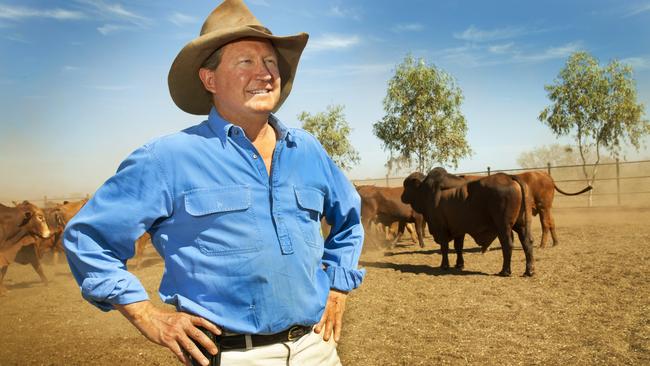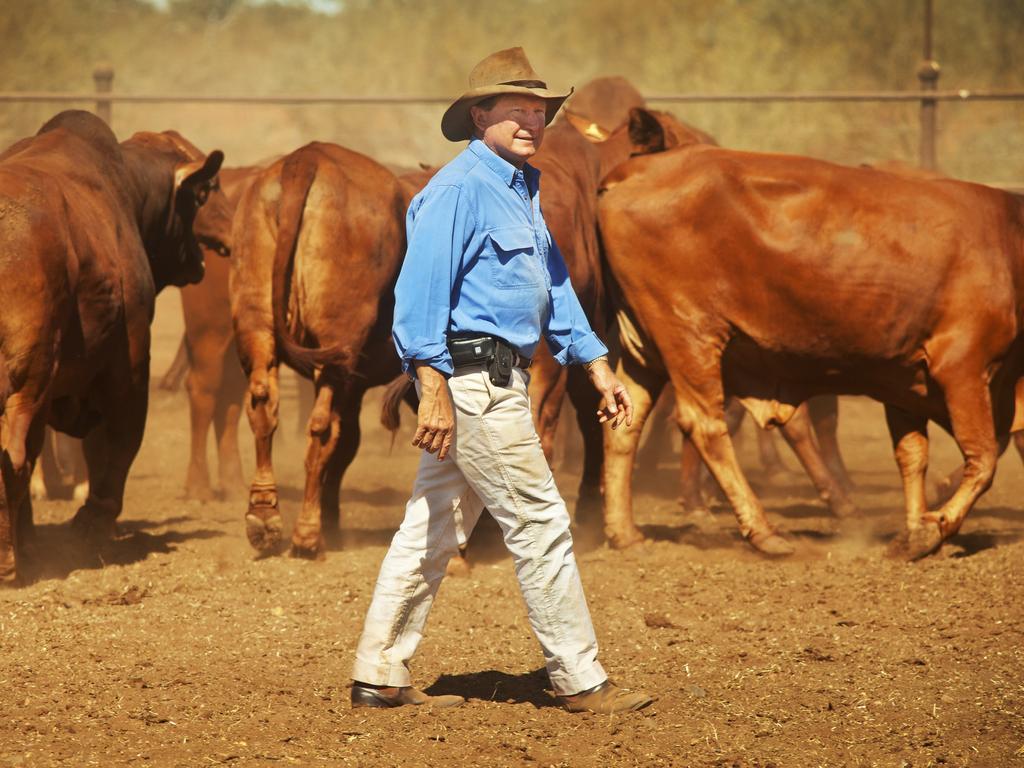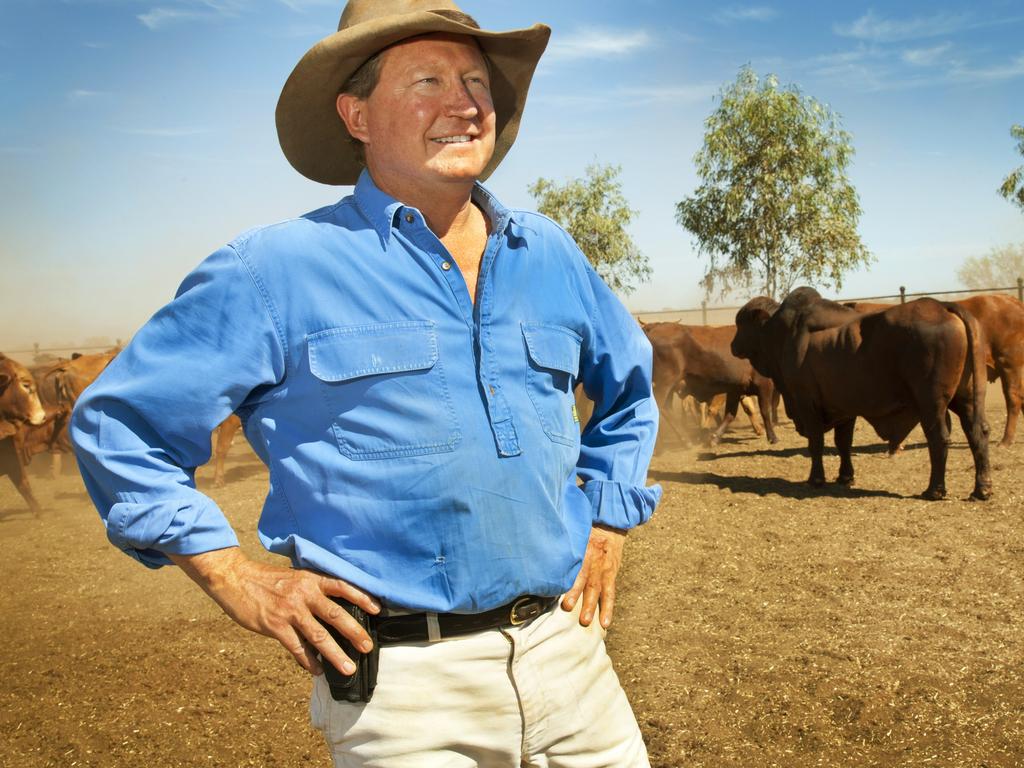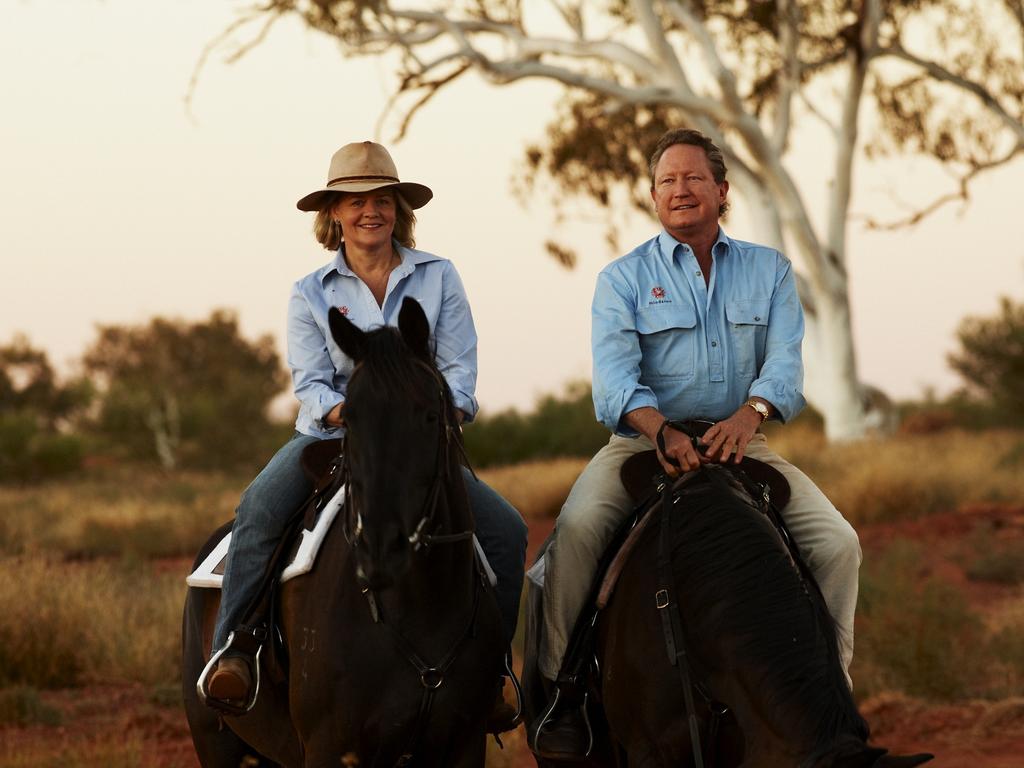Andrew Forrest unveils green energy plan for Fortescue Metals Group
Mining billionaire Andrew Forrest wants to turn his Fortescue Metals Group into one of the biggest energy companies in the world.

Mining billionaire Andrew Forrest wants to turn Fortescue Metals Group into one of the biggest energy companies in the world, outlining ambitious plans at the company’s annual shareholder meeting to eventually produce 235 gigawatts of renewable energy, or five times the current capacity of Australia’s National Energy Market.
Mr Forrest told Fortescue shareholders on Wednesday the company plans to challenge global energy majors such as Chevron as an energy producer, as he tours the world trying to stitch up early-stage deals with national governments to put Fortescue’s foot on the best renewable energy opportunities.
Fortescue Future Industries, a subsidiary of the WA iron ore miner, has already signed early-stage agreements in Papua New Guinea, Indonesia and beyond for potential hydroelectric and other renewable energy projects, and Fortescue itself has been investing heavily in plans to partly power its iron ore mines through a mix of solar and wind generation, and batteries.
In addition, the company has cut deals with Australia’s CSIRO and Hyundai to commercialise hydrogen and ammonia technology and in early 2020 appointed former Pacific Hydro boss Rob Grant as its director of energy projects.
Mr Forrest told shareholders the company plans to bet big on green hydrogen and ammonia in the future, flagging their rise as substitutes for diesel as well as in grid-scale energy generation.
Mr Forrest’s $20bn in personal wealth is underpinned by a stake in Fortescue worth more than $17bn that has paid him and his family more than $3.2bn in dividends in the past two years alone.
The Fortescue founder and chairman said the company had now engaged with 25 governments around the globe to talk about potential energy projects, targeting total eventual production of 235GW of renewable energy a year — or five times the capacity of the National Electricity Market.
He plans to visit another 24 countries to seek out other opportunities, Mr Forrest said.
“After scientific and personal analysis of the renewable energy resources of our little planet, I can assure you that there is more than enough renewable energy to sustainably and economically supply every person on this planet, from this time forth,” he said.
“It is our job to respectfully use these readily available renewable resources and supply the world’s fuel and power at sufficient scale to satisfy the need for abundant, cheap, zero pollutant energy.”
Mr Forrest said Fortescue was already planning a multi-gigawatt hydrogen and ammonia system in the Pilbara to power its mining fleet, and replace the fossil fuels that fuel its operations, displacing up to a billion litres of diesel a year.
“We think we can move from importing diesel to producing all of our own energy and all our own fuel. It is a multi-billion-dollar investment and we have had a number of financiers approach us to finance this away from Fortescue’s own balance sheet,” he said.
Mr Forrest said he wanted to put Fortescue at the forefront of the coming “stampede” into renewable and green hydrogen and ammonia production.
“We know that if we’re going to meet and hit the Paris targets, we’re going to need a 70 per cent reduction in carbon emissions,” he said.
“I see that once we can create sufficient renewable energy and renewable fuels where — like the oil and gas sector — we can guarantee reliability of supply at volume and scale, there will be a veritable stampede into renewable energy and green industries.
“When we, as Fortescue, the pioneer, can really lead the way in large-volume and low-cost green hydrogen and ammonia, shipped around the world, then you’ll see others join and you’ll see the commercially driven end of climate change.”
Mr Forrest did not put a price on Fortescue’s ambitions, but said they would be funded by debt tied to individual projects, and would not risk the miner’s main balance sheet.
Speaking on the sidelines of the meeting, chief executive Elizabeth Gaines — tasked with delivering on Mr Forrest’s new vision — said Fortescue was still only at the “early stages” of building a business in the energy sector.
“These are ambitious targets and we are at the early stage of assessing these opportunities. As the chairman mentioned, any decision — and we haven’t made any capital investment decisions in those initiatives at this point in time — will be supported by detailed feasibility studies and all the rigour and discipline that Fortescue is known for in terms of delivering on major projects and delivering returns to shareholders,” she said.
Ms Gaines pointed to Fortescue’s $700m Pilbara energy project, including transmission lines connecting its mines to renewable energy projects, as a sign the company was serious about both its ambitions in the energy sector, and its commitment to reducing its own carbon emissions.
But she said Fortescue had not set any time frame to reach Mr Forrest’s target of producing 235GW of energy a year.
Energy analysts say the Fortescue goal is ambitious, but could put the company ahead of the curve as the globe turns to renewable energy to fend off the risk of climate change.
“A portfolio of 235GW would be a bit under an order of magnitude larger than the biggest renewable energy portfolio operating today. However, as technology costs continue to fall, renewable energy installations continue to break records,” Bloomberg NEF’s head of Australia research Leonard Quong said.





To join the conversation, please log in. Don't have an account? Register
Join the conversation, you are commenting as Logout